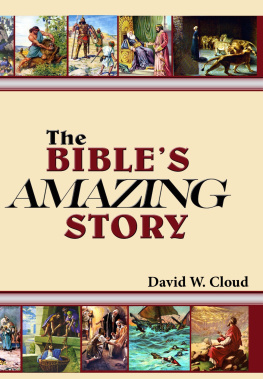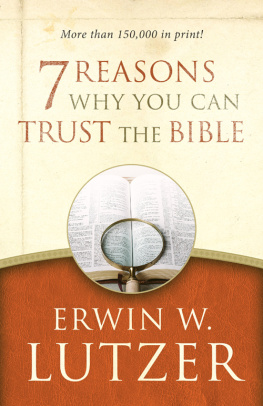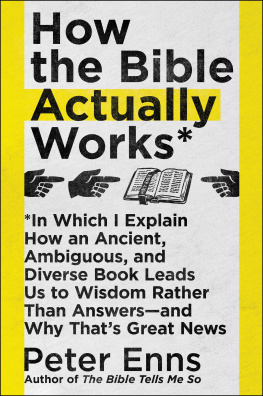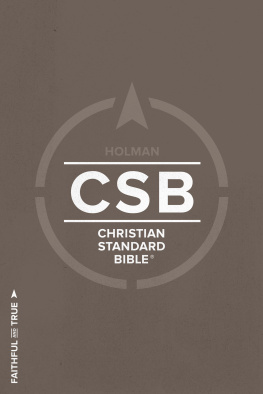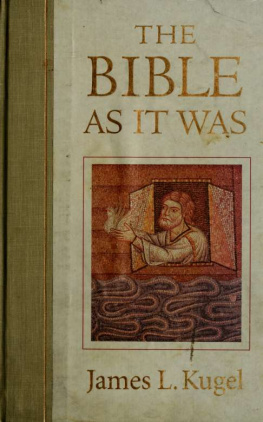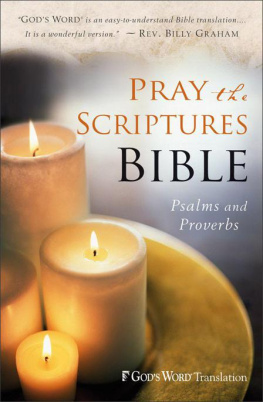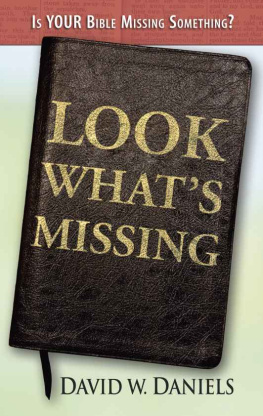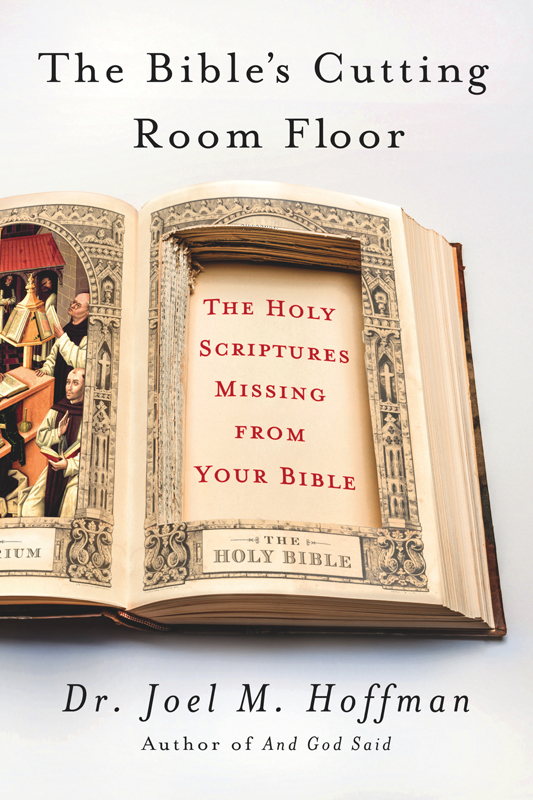Contents
Guide

The author and publisher have provided this e-book to you for your personal use only. You may not make this e-book publicly available in any way. Copyright infringement is against the law. If you believe the copy of this e-book you are reading infringes on the authors copyright, please notify the publisher at:
us.macmillanusa.com/piracy.
For my students
ACKNOWLEDGMENTS
Some two thousand years ago, the poet Ovid wrote that the labor of writing can cause pleasure. In my own case I have been exceedingly fortunate to interact with people who augment that pleasure.
For five years now, Irene Goodman has been my agent and guide to the intricacies and quirks of publishing. Shes a fun person with a kind soul, and Im lucky to have stumbled upon such a partner. Without her, this book would still be an unpublished collection of thoughts, and I would never have been introduced to the folks at Thomas Dunne Books. Thank you, Irene.
My primary contact at Thomas Dunne Books is Peter Joseph, and working with him and his team has been delightful. The compromises demanded by the nature of publishing makes it ripe for contention and bickering, but my experience with Peter has been just the opposite. I am a better author for knowing him, and I have enjoyed every step of the publication process. Thank you, Peter.
Im also grateful to a variety of talented people who work with Peter: Melanie Fried, his assistant; Angela Gibson, for her diligent and insightful copyediting; Rob Grom, for designing one of my favorite book covers (how lucky for me that it ended up on my own book); Elizabeth Catalano, production editor; Lisa Goris, production manager; Allison Frascatore, publicist; Laura Clark, team leader; and Karlyn Hixson, who oversees marketing. The fact that I have to refer to some of these people by title just demonstrates how much work went into this book that I dont even know about.
Tom Dunne is the one whose vision put these people together, so Im in his debt not just for publishing my work but for doing so in a way that let me enjoy the process. Equally, Im indebted to Sally Richardson, publisher at St. Martins Press.
Special mention is due to Rev. Paul Raushenbush, the executive religion editor at The Huffington Post . A couple of years ago he surprised me by requesting some dozen drafts of a short piece I wrote for him. My writing has benefited greatly from what that process taught me.
The path that brought me to where I am has been graced by far too many people to mention by name, but I must single out a few, starting with my father, Rabbi Lawrence Hoffman, Ph.D., who, in addition to everything else he has done, has been my lifelong study partner.
Im also particularly grateful to: Rabbi Gary Bretton-Granatoor, who helped me thrive; Marc Brettler, for his compassion and knowledge; Rabbi Billy and Cantor Ellen Dreskin, for their support, honesty, and wisdom; Jennifer Hammer at NYU Press, for publishing my first book in a way that made me want to continue; Rabbi Shoshana Hantman, a rare island of wisdom and sanity (though shed never admit it) in an otherwise turbulent sea; Rabbi Stuart Geller, for his compassion, support, and humor; Rabbi Allen Smitty Smith, for believing in me; Danny Maseng, for expanding my horizons; David and Karen Frank, for their kindness and thoughtfulness, and for opening so many doors; Rabbi Jaimee Shalhevet, for her insight; Lauren Rose, for her support and enthusiasm; Tal Varon, who by personal example reminds me to walk humbly; Janet Walton, for being clear on what matters; and Rabbi Danny Zemel, a modern-day prophet.
Finally, I am endlessly grateful to my parents, Sally and Larry, who gave me a good life.
CONTENTS
INTRODUCTION: THE ABRIDGED BIBLE
The Bible you usually read is the abridged version.
Its contents were culled from a much larger selection of holy scriptures when new realities forced religious leaders to discard some of their most cherished and sacred books, resulting in what we now call the Bible.
Some writings were left out for political or theological reasons, others simply because of the physical restrictions of ancient bookmaking technology. At times, the compilers of the Bible skipped information that they assumed everyone knew. Some passages were even omitted by accident. For these reasons and more, your Bible doesnt give you a complete picture.
The Book of Genesis in the Bible tells you about Adam and Eve in the Garden of Eden, but not what happens to them after they get kicked out for disobeying God. It presents Abraham, the father of monotheism, but doesnt explain how he came to reject idolatry and leave his fathers idol factory. It introduces you to Noah, who walked with God but, except for the briefest of mentions, not to his grandfather Enoch, who also walked with God and, in addition, learned the secrets of the universe. Other books that were left out of the Bible detail the fascinating second part of Adam and Eves life, the intriguing first part of Abrahams, and Enochs mysterious saga.
Your Bible contains only 150 Psalms, but its clear from other books that there used to be more.
The Gospel of Matthew refers to the time of King Herod, when wise men came to Jerusalem from Bethlehem. But it doesnt tell you who King Herod was, why that Roman ruler is so important to readers of the New Testament, how he came to be in charge of Jerusalem in the first place, or about the amazing connection between the Maccabees and the forced conversion of Herods family that made it possible for Herod to reign in the first place. Modern readers cannot fully appreciate the message and value of the Gospels without this background information, but they have to look outside the Bible to find it.
The Book of Esther describes the famous story of the Jews near destruction at the hands of the Persians and how the Jews were saved by heroes named Mordecai and Esther. Though you can read most of it in your Bible, the story opens with a dream in which Mordecai frames the struggle between the Jews and the Persians in terms of two serpents that are ready for battle. That dream is missing from your Bible.
Christians know they have the Book of Revelation, about the end of times and what happens when Gods plan for earth is fulfilled, because Revelation is in the New Testament. Jews had similar books, also about the end of times, which offered different answers to what eventually happens to the earth. But those books were left out.
At the heart of these omissionsand many more like themis the very nature of the Bible. While we now consider it a single book, it began as a diverse set of writings, remarkably similar to a best of collection, a college literature course, or a suggested reading list.
Two thousand years ago there were hundreds of religious documents that were important to the Jews and early Christians. Some of these lie at the heart of both religious and secular Western life to this day: Genesis (with stories that almost every child learns), Exodus (the focus of more than one major motion picture and also a source for the Ten Commandments), Leviticus (with its laws about homosexuality), Psalm 23 (The Lord is my shepherd), the Book of Isaiah (beat their swords into plowshares), Ecclesiastes (To everything there is a season), the Gospels (with their descriptions of the virgin birth), John (For God so loved the world), Revelation (the sign of the beast), and so forth. But these parts of the Bible represent only some of the central writings from that influential time period.


